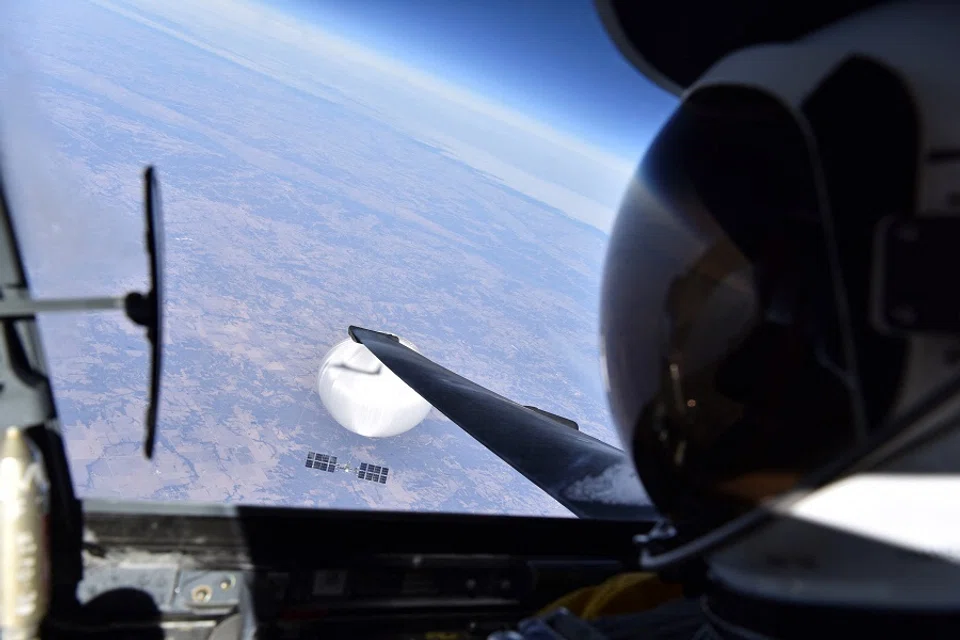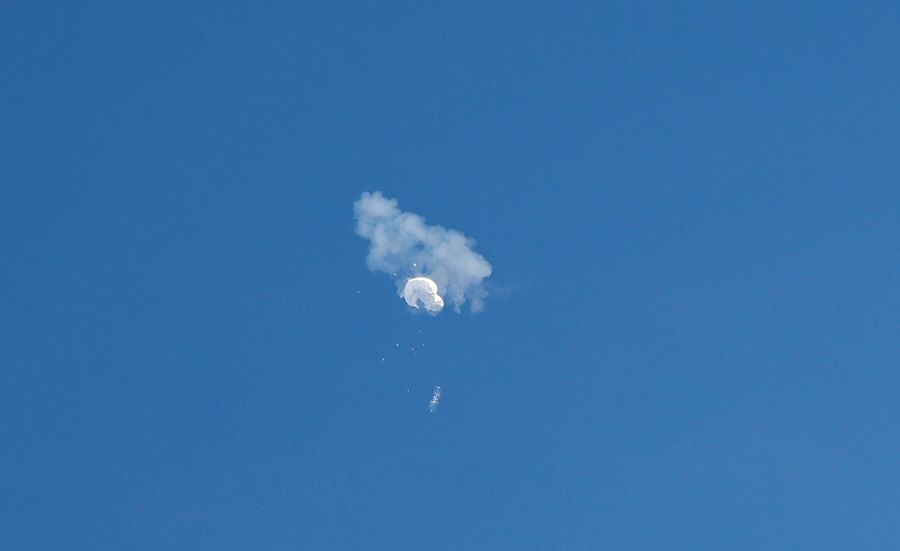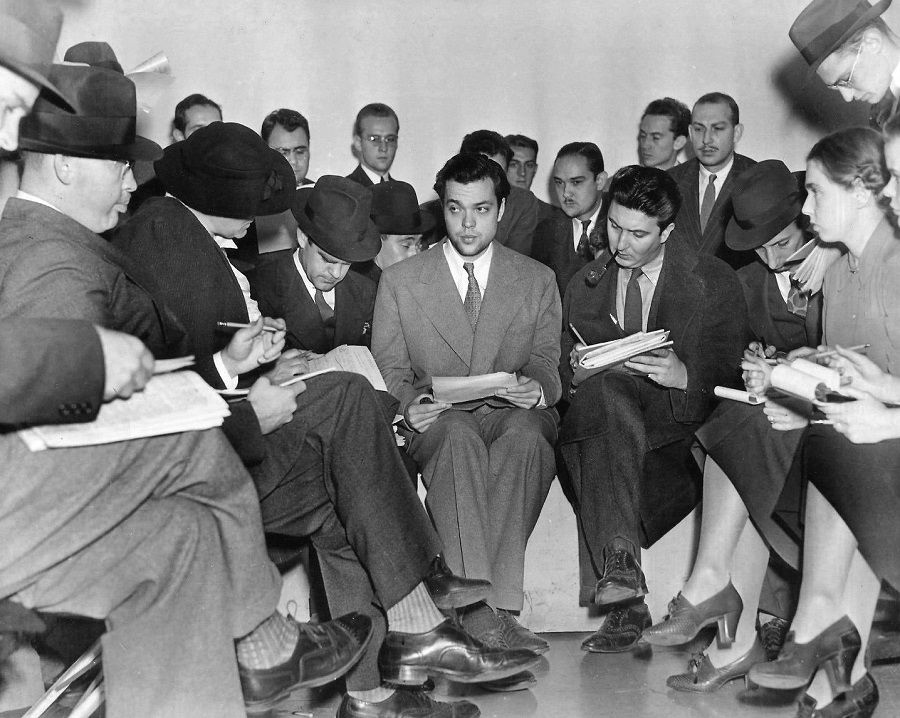Mass hysteria over spy balloons: The pot calling the kettle black?

Before February this year, who would have thought that a "wandering" Chinese balloon would provoke such a strong reaction in the US and trigger a huge diplomatic storm?
While China claims that the balloon is a "civilian airship" used for meteorological purposes, the US insists that it is a military spy balloon. China asserted that the balloon had accidentally flown into US airspace "due to force majeure" and "regrets" the incident, but the US blasted China over the incident, convinced that the balloon was intentionally flown into US airspace to monitor its military sites.
Media's 'hysterical overreaction'
Indeed, it is unfortunate that the balloon entered US airspace at a time when China-US tensions are at their peak and the US's China phobia is at its worst, which inevitably touched already jittery nerves and blew things up. Under domestic pressure, the US government had an unusually strong reaction. The US mainstream media and social media platforms also went on to spread the hype for days, tracking it every step of the way, creating panic and astonishing levels of absurdity.
The situation was too much even for some American and international media to bear, describing the outburst as a "hysteria". Mainland Chinese media obviously used even harsher wordings.

The US's Monthly Review magazine published an article titled "Why Do We Have a Balloon Hysteria in the U.S.?" on 21 February, saying news feeds in the US have gotten "completely insane".
Hong Kong's South China Morning Post (SCMP) on 15 February also published a commentary titled "Balloon Brouhaha is American Political Hysteria at its Worst". It pointed out: "Such hysteria undermines any attempt at moderation and rationality, thus pushing an ever hardline and confrontational stance."
It added, "Both Republicans and Democrats have been tripping over to be seen as more hardline over the blown-up balloon, or for that matter, any Chinese-related issue. Their political virtue signalling is pushing everyone into a state of mass hysteria, with the mainstream media joining in."
You might take the two reports with a pinch of salt as the Monthly Review is a left-wing American media outlet while the SCMP could be considered a "Chinese media outlet", so it's unsurprising that they adopt these positions.
But even the reputable mainstream American newspaper The Washington Post, in an article titled "The Frenzy Over China's Spy Balloon is Dangerous and Unwarranted" published on 6 February, columnist Max Boot described the US's response as a "hysterical overreaction".
He wrote: "The whole incident leaves me feeling unsettled and alarmed. Oh, I'm not worried about the spy balloon. The violation of U.S. airspace was unacceptable, but it did not pose any actual threat, and it's doubtful that it gathered any intelligence that Chinese spy satellites cannot. What concerns me is the hysterical overreaction on the part of so many Americans to the balloon's progress."
Under media sensationalism, the US was thrown into a state of panic as if the country was under siege.

Even in our small state in Southeast Asia, which does not choose sides, people are shaking their heads in disbelief. Professor Tommy Koh, a renowned diplomat and Singapore's ambassador-at-large, who has always been moderate, refined and mild in his language, could not resist criticising the US's "hysteria" about China, which was a big surprise.
In a commentary written by Zaobao associate editor Han Yong Hong on 10 February, Han quoted Koh as saying during an online panel discussion organised by the ISEAS-Yusof Ishak Institute on 9 February, "When I look at the reaction of the American people to this balloon... I feel worried. I think there is a hysteria in America about China. And this makes rational thinking and rational policy making very difficult."
Han went on to say, "As a well-mannered and refined veteran diplomat, Koh's blunt criticism of the US was rather unexpected. However, it highlighted the deep concern among diplomats and academics in the region about worsening China-US relations that are at risk of going out of control."
The spiralling balloon hysteria is indeed worrying. While the Chinese balloon was finally shot down with a missile from the US's F-22 fighter jet on 4 February, the US moved on to discover three more unidentified flying objects. Under media sensationalism, the US was thrown into a state of panic as if the country was under siege. All three flying objects were subsequently shot down but they turned out to be "benign".
Reminiscent of 1938 'Martian invasion'
The situation is reminiscent of the mass hysteria that occurred in the US in 1938 over "extraterrestrial life".
Throughout the 1930s, the US experienced a severe depression. The situation was somewhat similar to that of today, as the people were worried and jittery over the economic decline and the shadow of war.
Commercial television was not yet widespread and radio was one of the main sources of information for people. On 30 October 1938, the radio drama "The War of the Worlds", directed and narrated by Orson Welles, was broadcasted over the CBS Radio Network. Dramatised by Welles, the radio drama tells the story of a Martian invasion of Earth, interspersed with scientist interviews, live newscast of developing events, and the blare of the military and police rushing to the scene, with the government's declaration of "a state of emergency" inserted at various intervals.
The paper later reported that as many as six million people tuned in to the radio play, and many believed that it was a real Martian invasion.

As Welles had a convincing and commanding voice, the drama grew increasingly tense through his vivid and graphic narration, along with the constant sounds of explosions, strange shrieks from the Martians, human screams, the screaming and moaning of police officers, and more. It was so realistic that many listeners believed it.
To bring the drama to a climax, Welles interjected with a big message from the "battlefield" that the Martians have begun a gas attack, New York City was being evacuated, and this might be the last broadcast...
Shortly after, the broadcast was interrupted by the announcer's "coughing fit of gas inhalation" and the broadcast came to a screeching halt and silence. By then, many listeners were left frightened and on tenterhooks. Some even fled from their homes!
The show was broadcast on the eve of Halloween. The next day, The New York Times reported the incident on its front page with the headline "Radio Listeners in Panic, Taking War Drama as Fact: Many Flee Homes to Escape 'Gas Raid From Mars' - Phone Calls Swamp Police at Broadcast of Wells Fantasy". The paper later reported that as many as six million people tuned in to the radio play, and many believed that it was a real Martian invasion.
The panic in 1938 was purely an accident, but the panic in 2023 was completely fabricated by man.

Orson Welles' radio play has become a classic case study in broadcast studies, and is now even available on YouTube. It is considered one of the earliest examples of electronic media causing mass hysteria, a vivid illustration of the enormous power of mass media in triggering fear and affecting people's emotions.
But the panic in 1938 quickly died down following the authorities' clarification. In contrast, the "balloon panic" in 2023 only gained momentum amid the endless sensationalisation by politicians and the media. The panic in 1938 was purely an accident, but the panic in 2023 was completely fabricated by man.
Aftermath of the balloon saga
As a result of the balloon incident, US Secretary of State Antony Blinken cancelled his plans to visit China. Meanwhile, China declined the US's request for a telephone conversation between the Chinese defence minister and the US defence secretary. China-US relations had just shown signs of warming up following an in-person meeting between Biden and Xi in November last year in Bali, but now worsened again.
In addition, the Republicans capitalised on the panic to strengthen the anti-Chinese stance in the Republican-controlled House of Representatives. On 28 February, the House Financial Services Committee advanced a raft of China-related sanction bills, while the Committee on Foreign Affairs on 1 March approved a bill to ban TikTok. These motions were initiated by representatives of both parties.
The Foreign Affairs Committee also plans to vote on a motion that requires China to take responsibility for the balloon drifting into US airspace and to provide a report on the incident, and urges Biden to implement visa restrictions. Republican representatives have also been putting pressure on the Biden administration to restrict US exports of sensitive technology to China.
Doesn't the US also play the game, and better than anyone else at that?

And so the layers add up, with no end in sight.
In an interview with the Global Times on 1 March, former Singapore foreign minister George Yeo noted, "If a balloon can create such a domestic storm in the US, imagine if something more serious had happened and how difficult it would be for policymakers in Washington to make the right decisions. They will come under tremendous domestic political pressure to do things which may not be in the long term interest of the US."
US spy programmes
Essentially, the balloon "did not pose any actual threat" (quoting Max Boot) - so is it really so heinous? Even if it was a spy balloon that intentionally entered US airspace to gather military intelligence, so what? Isn't that the international norm? Doesn't the US also play the game, and better than anyone else at that?
Let's just talk about the balloon. Last year, wasn't the US Department of Defense drafting a new plan to gather military intelligence on China and Russia with balloons? The Politico article of 5 July 2022 titled "US Military's Newest Weapon Against China and Russia: Hot Air" revealed the plan. The article wrote: "The high-altitude inflatables, flying at between 60,000 and 90,000 feet, would be added to the Pentagon's extensive surveillance network and could eventually be used to track hypersonic weapons."
In fact, balloons are just one small toy in the US's array of spy tools. Its various intelligence agencies use numerous advanced technologies, including AI internet technology. Indeed, it is a known fact that the US has a global surveillance network.
Readers probably remember Edward Snowden and the shocking revelations of ten years ago.
Snowden was an employee with a contractor for the National Security Agency (NSA). In 2013, he stole millions of secret documents gathered under the PRISM intelligence programme, and systematically released them to major European and US media such as the Guardian and Washington Post.
The world was stunned to find out that under PRISM, the NSA surveilled millions of people, not just from enemy countries but also leaders of friendly countries and allies, including then German Chancellor Angela Merkel.
Time smoothes over everything, and as days pass, the US continues its comprehensive and constant surveillance of enemies and friends alike - who can do anything about it?

The revelation of PRISM sent shock waves around the world, leading to criticisms and protests from various countries. US intelligence agencies were embarrassed, while the US's image took a severe hit. But so what? Time smoothes over everything, and as days pass, the US continues its comprehensive and constant surveillance of enemies and friends alike - who can do anything about it?
PRISM is likely just one that was exposed among the various other secret programmes - just what those are, is up to readers' imagination. From this perspective, China's stray balloon and the US's plans for surveillance balloons on China and Russia are trivial.
Most ordinary people might not know of such matters, but US representatives, politicians, media bosses and the entire government system are probably well aware. Then why work together - or at least engage in collective inaction - to allow the extreme demonisation of China, and play up a suspected spy balloon into mass hysteria without regard for the potential consequences? Is that not the pot calling the kettle black? What is the intention?
When diplomacy is hijacked by domestic politics, and being anti-China is the only politically correct move that unites the country, the mild and rational voices are drowned by aggressive yells. Escalating the antagonism is the only way out, and war is the consequence - what a frightful thought.
This article was first published in Lianhe Zaobao as "看着那颗气球 想起了威尔斯、斯诺登".
